Twentieth century music is at an interesting point in its history from the perspective of recordings. Contemporary music, for obvious reasons, is always the most under-represented, whereas works from the last hundred years are beginning to reach the stage where’s there’s a more meaningful range of recordings available. In the case of some repertoire, though, there’s a question to be asked with regard to interpretation, and to what degree different recordings not merely do but can bring something genuinely new to the listening experience. Perhaps that sounds naïve or ridiculous: after all, isn’t each individual performance, live or recorded, entirely unique? Maybe so, but when i consider concerts and recordings i’ve heard of music by, for example, Messiaen (especially his later work) and Penderecki (especially his earlier work), the differences between them have, for the most part, felt more than usually slight. i attribute this in part to the very particular, unique musical languages of these two composers. Aside from accuracy of performance, what scope is there for wide varieties of interpretation in, say, Messiaen’s Chronochromie or Penderecki’s Threnody?
i pose the question not because i believe the answer is “none”, but because it’s something i’ve genuinely wondered about in recent times. Late last year, listening to Kent Nagano and the Bavarian Radio Orchestra’s 3-disc box set featuring Messiaen’s Poèmes pour Mi, Chronochromie and La Transfiguration, i was struck by how anonymous it sounded. All of it was 100% recognisably Messiaen, yet i’d be hard pushed to say how much of it was 100% recognisably Nagano or Bavaria. Does that make them bad performances? or does it, perhaps, make them all the better because the conductor and orchestra haven’t got in the way of the composer’s voice? Is it enough for a performance to be merely faithful? As contemporary and avant-garde music becomes ever more part of history and more widely recorded, these are vital questions. After all, we live at a time when if we want to hear, for example, a symphony by Beethoven, we have literally hundreds to choose from; will the time come when there could be over a hundred versions of Chronochromie or Threnody? Would that be desirable? Would it be meaningful? Again, i don’t necessarily believe the answer is “no”, though the actual answers to all these questions no doubt lie in the hands of each individual orchestra and conductor who decide to explore these works and present them, hopefully, afresh.
Earlier this year, while making my way through SWR Classic’s epic 10-volume Michael Gielen Edition, i couldn’t help noticing that, despite its generous broad sweep of 20th century music (explored in volumes 7 and 10, the latter of which i reviewed in February), some significant composers were entirely absent. Messiaen and Penderecki were two such names, and i particularly wondered about them at the time, not simply because they weren’t included but more because i felt that if anyone could find something genuinely new in their interpretation of this music, then Michael Gielen – with his gift for teasing out amazing amounts of detail plus his penchant for unflinchingly exposing the raw emotional core of the music – surely could. This gap in the catalogue has now been filled thanks to two recent releases on the Orfeo label (who seem to be trying to prove they’ve got just as many previously unheard Gielen recordings in their archive as SWR Classic), both featuring the ORF Vienna Radio Symphony Orchestra: one a portrait disc of Messiaen, the other focusing on music by Szymanowski and Penderecki.
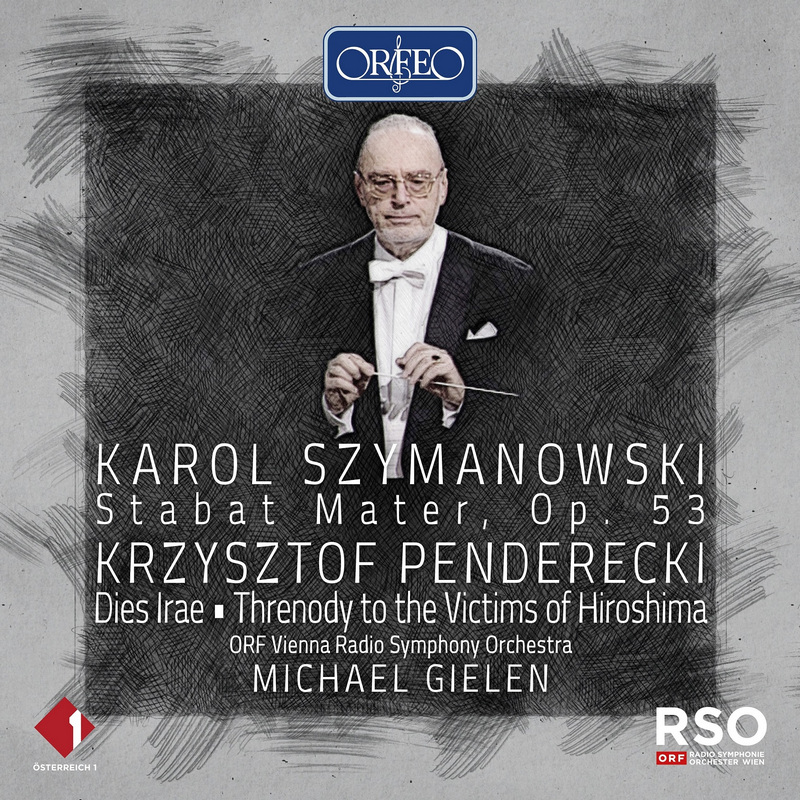
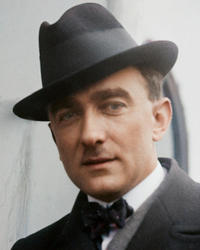
Though stylistically extremely different, what unites the music on the latter disc, in addition to both composers being Polish, is its focus on lamentation. In the case of Szymanowski’s 1926 Stabat Mater, though, the music is often so opulent that the case for it being a lament can be hard to make. Gielen’s approach is therefore not to try, but instead to focus on the passion that drives the piece. That being said, the opening taps into a poignant sense of melancholy – albeit captured in lush language – with each phrase like a separate outburst of mourning, not increasing over time but simply continuing, in a sequence that therefore fascinatingly combines richness with a kind of dazed agony. For anyone who doesn’t share its religious sentiments it’s impossible to take the texts seriously (indeed, as they progress they become downright nauseating), yet Gielen, the quartet of soloists and the singers of Chorus sine nomine all treat them as if they believed each and every word. As such, the third and fourth movements are especially effective (almost affecting), turning inward and intimate, the orchestra suffusing the voices with tenderness and soft radiance. Likewise the anguished development of the penultimate movement is rendered a ferocious twist from intense depth to full-blown fire, closing the work in an atmosphere of unmistakable ecstasy.
The extent to which Gielen ensures a fully-committed authentic response to such manic sentiments indicates what’s going to happen when his attention is turned to Penderecki. In the Dies Irae, composed in 1967 as a memorial to the victims murdered at Auschwitz, both the solemnity and scale are immediately apparent. Furthermore, in a move that at first seems disorienting, the piece is presented as inhabiting a kind of schizoid state, veering irrationally between passages that seem ordered and ostensibly random blurts, howls and abstract noise. Over time, though, the performance indicates that the default position of the music is in fact cacophony and clamour, and that everything else – anything approaching clarity – is merely holding itself together just long enough to emote and draw breath before losing it all again. The whispered syllables at the start of the central ‘Apocalypsis’ thereby become deeply unsettling, both for the way they’re articulated by the Vienna Concert Chorus as well as for the implication of what’s inevitably to come, soon enough breaking apart completely in a dazzling but horrifying collapse. On the one hand, Penderecki’s wildly dramatic imbalance begs the question of whether it all sounds a bit over the top, less an authentic lament than the composer’s conception of what an authentic lament might sound like. Yet, how else could any response to the hell of Auschwitz sound? What capacity is there for clarity, or for anything approximating order or control? Again, Gielen’s full-throttle commitment makes the Dies Irae sound like the only true Day of Wrath ever adequately captured in sound.
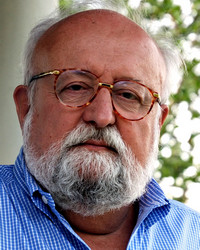
As for the Threnody, much is often made of the fact that Penderecki’s naming it as a tribute to the victims of Hiroshima was an afterthought, but who cares – what difference does it make? Appropriately, it’s the composer at his most aloof and immediate, music that simultaneously means nothing and means everything, captured in not so much a narrative as a collage of disparate, desperate, archetypal sound masses. Bearing in mind what i said previously about interpretation, it’s a relief (though not a surprise) to hear Gielen delicately personalise Threnody in this performance. The sound shapes themselves are wonderfully vivid – the weaker string clusters sound like the abject wheezing of a knackered squeezebox – but beyond this it’s the way Gielen taps into that fundamental abstract / emotional, meaningless / meaningful dichotomy that makes this recording so compelling. There’s a recurring impression that the music is at once numb while also keening. Another way of putting it would be to say that Gielen simply makes the music “open”, enabling it to not so much convey anything itself as serve as a vehicle for whatever feelings we want to project onto it. All the same, he prevents the piece from ever becoming just a blank litany of abstruse textures, imbuing it with character and detail, where possible making some of Threnody’s transitions surprisingly telling moments of small-scale drama. One of the more notable occurs halfway through, when a wall of noise reduces to a single unison pitch, then reduces further to just a single instrument, its subsequent wavering suggesting the entire weight of all the players has been brought to bear on its shoulders. Perhaps there’s no such thing as a definitive performance of Threnody, but if i had to pick just one, this excellent recording would be tough to beat.
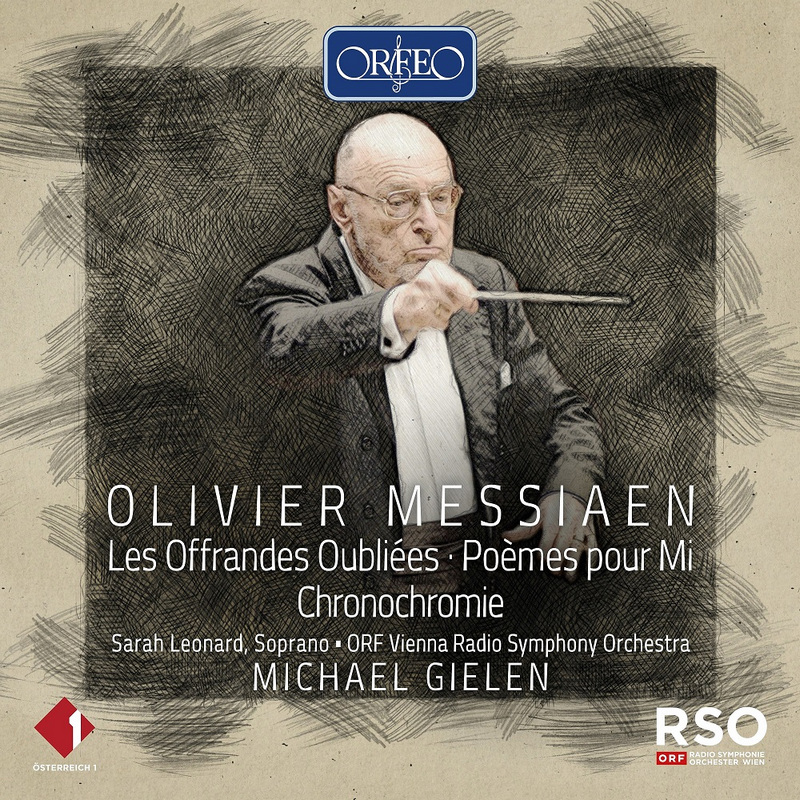
Volume 7 of the Michael Gielen Edition, exploring late 19th and early 20th century music, includes a disc questioning ‘Kitsch or Art?’ Featuring music by Wagner, Richard Strauss and Puccini, Messiaen’s early orchestral work Les Offrandes Oubliées (1930) would fit perfectly alongside them. Contrary to the general trend to have befallen his music over the years, Gielen and the ORF orchestra don’t in any way linger excessively over Messiaen’s emollient string writing (indeed, this performance is around a minute shorter than most), though even without milking it there’s no way to counter the work’s sheer oleaginous weight. Yet unlike many performances of Messiaen’s ‘ecstatic’ music, Gielen prevents it becoming a homogeneous mush; instead, we hear it as a texture comprising distinct timbres blending together. It’s an important distinction that makes a significant sonic difference. In such a context as this, it would be hard not to make the short, central sin-inspired section sound aggressive, yet Gielen obviates the usual mistake of simply turning it into a superficial diabolical dervish, instead presenting it as an engaging tilting between order and chaos, integrating its recurring high shrieks into the texture rather than exaggerating them.
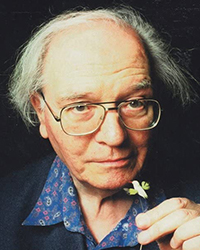
The success of this performance of Poèmes pour Mi (1937) is as much thanks to soprano Sarah Leonard as to Gielen and the orchestra. Together they create an amazing sense of rapture, as if the piece were caught up in one place even as it continually drives along. This is matched by a balance, conveyed in the surreal texts, between ecstasy and a more relaxed form of happiness, illustrating the divine / mortal aspects of love at the heart of the work. While the latter are exquisite, the former are utterly heightened, to the extent that, at its most extreme, the music becomes truly terrifying, Leonard sounding wonderfully unhinged. One of the loveliest aspects of this performance is the way the sections are heard not as separate movements but like different exhalations of the same air into the same atmosphere, a single extended (melo)dramatic articulation of twin conceptions of love. Throughout, Gielen continually teases out textural details, such as the inner movement in ‘Ta voix’, made to sound here like concentric wheels moving at different rates while the soprano soars overhead. Without minimising the quasi-romantic and impressionistic qualities of the music, Gielen manages to make Poèmes pour Mi sound like it’s not made of musical ‘substance’ at all, but fashioned from light and air. Though it’s up against some competition, this is the best performance i’ve yet heard of this piece.
The disc ends with the work i cited at the start, Chronochromie (1960), which coming in the wake of such unchecked bliss could hardly be a more startling contrast. As with his approach to Penderecki, Gielen avoids letting the music sound like a conveyor belt of wildly dissonant blurts, clangs and flurries, bringing his laser focus to ensure the intricate details and structural shape of the score all emerge clearly. As a result, the ear continually leaps all over the place in response to these individual elements and layers that blend and intermingle. The highlight comes in the two ‘Antistrophe’ movements, each presented as a weighty back-and-forth between robust wind phrases and busy xylophones heard over shining tremolandos, the first culminating in a massive multiplicity of sound strata, the second in a dense discordant chorale that finally splinters apart. In a similar way to Threnody, i’m not sure if there could ever be a definitive performance of Chronochromie, but what sets this one apart is that it doesn’t merely ‘sound like Messiaen’, it goes deeper, revealing what it is that makes Messiaen sound like Messiaen.
Michael Gielen’s Messiaen disc was released in July, his Szymanowski and Penderecki disc in September; both are available on CD and download.

Gosh, doesn’t the soundworld of the Penderecki Dies Irae sound close to that of Ligeti’s Requiem! Ligeti wasn’t slow in acknowledging the influence of Penderecki’s Threnody on his own work; in the case of those two religious works, though, I can’t help feeling that the inspirational “traffic” went in the opposite direction…
Thanks for drawing my attention to this new Gielen. The question of “do we need any more recordings of X” is especially acute for works where the composer oversaw the recording process. I admit to feeling almost zero interest in recordings of Ligeti outside the “György Ligeti Edition” and “The Ligeti Project” series, because the composer meant them to be definitive. (The exception is the <i>Requiem</i>, where the poor live sound quality of the “Ligeti Project” recording has made me prefer Eötvös’ surround-sound recording on BMC Records).
Messiaen, interestingly, was the opposite. I’ve read a great deal of biographical material on him, and I have never seen documentation of him disapproving of a recording. He had only praise for everything. But since, as you say, there appears to have been a tendency for performers to always take the same approach to his music, maybe he really was never disappointed.
Also, György Kurtág has overseen multiple recording processes, but he is infamous for never being able to achieve the result he can hear in his head, and so performers and engineers eventually simply give up after some number of takes. Since the composer is no help when it comes to what is a proper recording of his work, perhaps there is more room for competing recordings.
Finally, sometimes composers turn bad, and there is room for new recordings that make up for their faults. Here I’m referring especially to the late Boulez works, which exist in recordings by the tired old Boulez, but need to be recorded afresh by younger artists who still have the energy of the younger Boulez.
Hi Christopher, thanks for your comment. That’s interesting about Kurtág, i had no idea he was so exacting (and, apparently, fruitless) in the studio!
Regarding Messiaen, i remember as an undergraduate writing a paper on the history (as it was at that time, in the mid-1990s) of recordings of Turangalîla-Symphonie, and discovering how much the question of tempo had become altered since its première – specifically the tempo in ‘Jardin du sommeil d’amour’, which had decreased massively from its relatively brisk origins. This was exacerbated by Messiaen himself, who (as i’m sure you know) revised the score in the early 1990s, sanctioning the much slower speeds, with the effect that the birds in that garden now sound doped up to the eyeballs, rather than the bright, chirpy creatures that originally populated it. An old man’s view of the piece, presumably.
Edit: Further to my comments about Messiaen, i believe you’re right about him never (openly, at least) disapproving of a recording, though it was precisely at that “old man” stage in the 1990s when he collaborated with Myung-Whun Chung on the recordings for Deutsche Grammaphon that he publicly declared to be “definitive”. Personally, i find those DG recordings to be magnificent, really dazzling performances captured so vividly. Yet for all that, plus Messiaen’s imprimatur, i can never shake the feeling that it’s just one interpretation – and by no means necessarily the best one.
Rachel Beckles’ Wilson’s Ashgate monograph on Kurtág’s Sayings of Peter Bornemisza has a case study of perhaps the earliest story of Kurtág being impossible to work with in the studio. In that 1970s Hungaroton project, literally dozens of takes of that piece failed to satisfy him, and his attempts to put into words what he wanted from performers became increasingly hyperbolic. In later years the same conflicts have been recounted by e.g. the Ardittis and some of the performers involved in the big ECM New Series set.
[…] any performance, even such a stunningly lucid one as this, is forced to contend with. i’ve written previously about the difficulties of performing Messiaen with regard to faithfulness to the score and the possibility (or otherwise) of interpretational […]